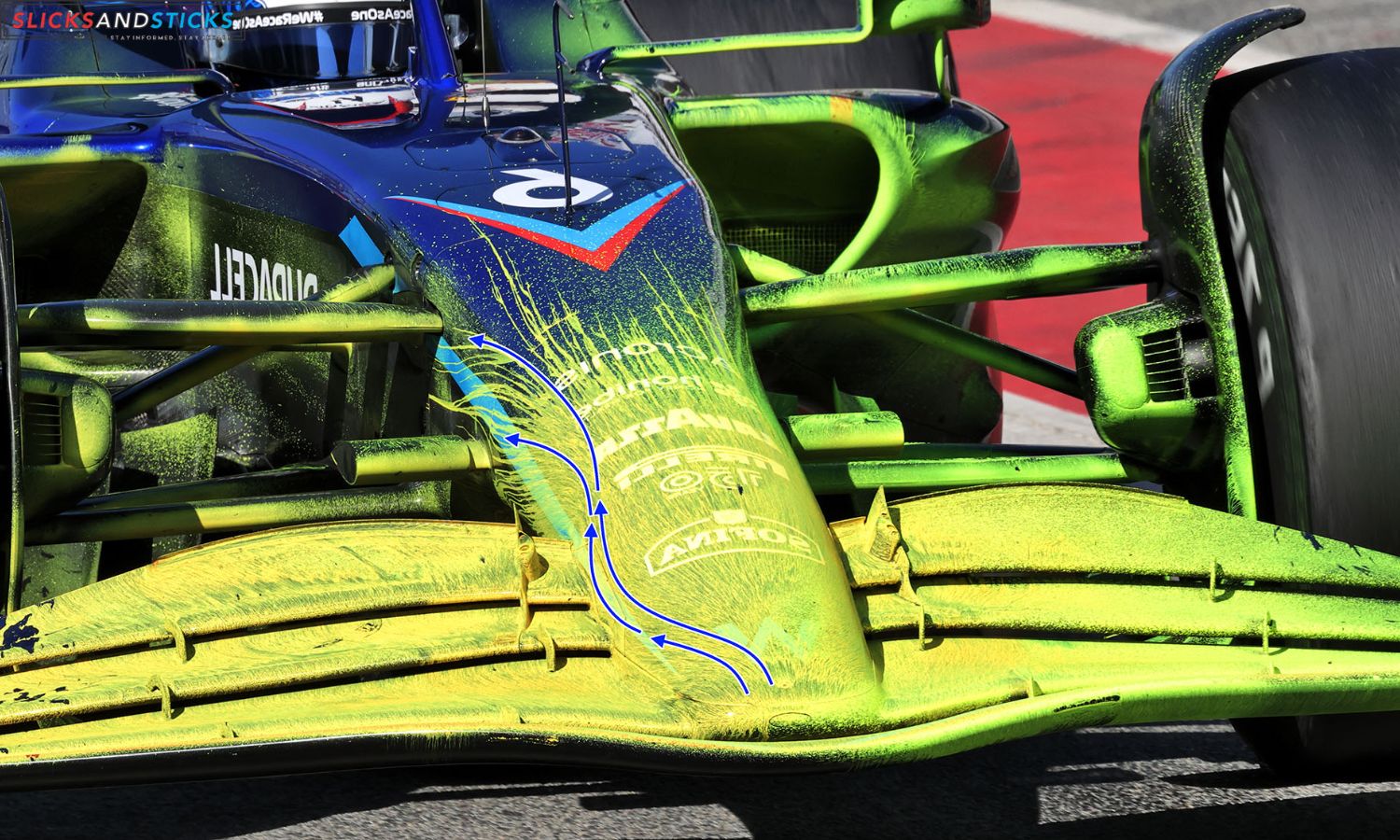Tuft Testing vs. Flow-Vis: Flow-vis is now the usual way for racing teams to figure out how aerodynamics work. It comes in many colors, like emerald green, sunflower yellow, azure blue, and tangerine orange.
But the Italian Grand Prix showed Alpine’s bravery in going against the rules. Alpine’s way of checking aerodynamics was a charming throwback to the early days of racing. Alpine chose not to use flow-vis on its redesigned beam wing for Monza, which was made to have low downforce, but instead to decorate it with small yarn tufts. This was a strange move that got a lot of racing fans talking.
This project with yarn tufts might seem like a throwback to a world where Formula 1’s technology and understanding of aerodynamics have changed a lot over the years. Still, don’t be fooled: Alpine’s strange actions are part of a well-thought-out plan. It is a big part of what teams try to learn about aerodynamics during their practice rounds.
In the world of flow vis, the goal is to dance with the complicated flow of air, whether it’s a ballet across the whole front of the car or a pas de deux with certain parts. Flow vis is a clear liquid mixed with a light oil, usually paraffin, to make it flow better. It can be used on just about any part of the car. When the vehicle goes, the flow vis moves in response to the airstream’s gentle touch, telling a moving story of how fluids behave. In its wake, it tells the story of how the air moves and often shines a light on places where the air’s hug has stopped.
When it returns to the pit lane, the teams take shots of its unpredictable dance moves. The experts on aerodynamics who work at the company then look at these shots. On the other hand, this is a post-performance autopsy, which is done after the show is over. But flow vis needs to be better to give a clear picture of how aerodynamics work at a particular road point or speed.
Alpine does something called “tuft testing.” This is a way to do things that lets you see the details of how the air is moving at every short point on the track. When the tires hit the road, high-quality cameras on the car focus on the tiny tufts of grass and make a movie clip of their beautiful dance.

We can see where the fluid is going and how the wind and pressure change by looking at how these tufts are set up. It always raises the red flag for possible stalls, clearly showing how the vehicle will act as it goes at different speeds and turns into a maze.
If these tufts spin in sync during fast sprints in a straight line but fight back during the tango in slow-speed hairpins, tuft tests will be the gold standard of truth, beating the abilities of flow vis.
Ultimately, choosing between tuft testing and flow-vis comes down to a simple question: do you want to figure out the current aerodynamic melody, or do you want to look back at its fleeting, kaleidoscopic history?
ALSO READ: Truex Playoff Chances: A Rollercoaster Ride of Triumph and Tribulation
Our Reader’s Queries
What is Tuft testing?
Tufting is a powerful technique for visualizing flow during flight. By observing and recording the motion of tufts, we can locate important flow features like boundary layer separation and reattachment. This makes tufting an essential tool for aeronautics flight testing, allowing us to study air flow direction, strength, and boundary layer properties with precision and accuracy. With tufting, we can gain valuable insights into the complex dynamics of flight and improve our understanding of how aircraft interact with the air around them.
What are the disadvantages of flow visualization?
Prolonged usage of the smoke filling technique can lead to the tunnel being filled with smoke, which needs to be vented out before proceeding with further flow visualization. The smoke leaves behind an oily residue on any surface it comes in contact with. Additionally, it is crucial to safeguard the pressure taps to avoid any blockages.
What is Tuft flow?
Tuft flow visualization is a method that captures the flow pattern created by tufts attached to a model surface. By observing the orientation of the tufts in relation to the freestream flow, we can easily identify flow features such as separation, reattachment, and recirculation regions. These tufts are lightweight and flexible, making them ideal for this technique.
What is flow visualization used for?
Tracer materials are commonly used to visualize flow in wind tunnels, water tunnels, and other flow facilities. This technique is also applied in field studies. One of the most common applications is the study of the flow around car bodies to enhance their aerodynamic features (see Fig. 4).
